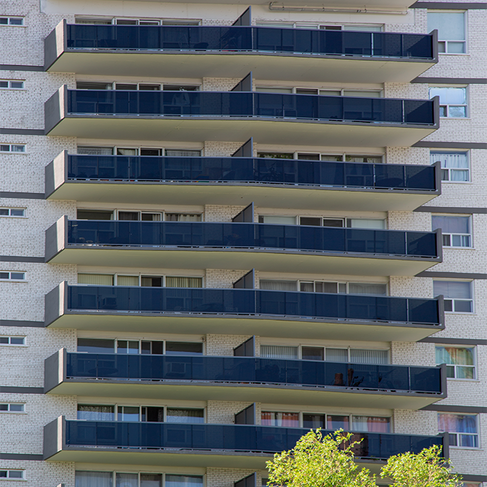7 Frequently Asked Questions about Safety Glass
- Ameet
- May 2, 2023
- 2 min read
Updated: May 5, 2023
Safety glass is a popular option for both commercial and residential construction, designed to protect occupants from potential hazards and reduce the risk of injury or damage. It is very common to have questions about safety glass, to learn about the types, how it works, and its benefits over regular glass. In this blog, we'll answer the most frequently asked questions about safety glass to help you better understand its importance and how it can improve safety for your glass needs!
1. What is safety glass?
Safety glass is a type of glass that is designed to break into small, rounded pieces when shattered, rather than into sharp, jagged shards. This helps to prevent injuries from glass fragments.
2. What types of safety glass are available?
There are several types of safety glass, including tempered glass, laminated glass, and fire rated glass. Tempered glass is made by heating it to a high temperature and then rapidly cooling it, which makes it stronger and more resistant to breaking. Laminated glass is made by sandwiching a layer of plastic between two layers of glass, which helps to hold the glass together if it breaks

3. How is safety glass tested?
Safety glass is tested by subjecting it to a variety of impact and load tests to determine its strength and resistance to breaking. The most commonly used test is the impact test, which simulates the glass being hit by a large object, such as a person or a car. Other tests include load tests, which measure the glass's ability to support weight, and thermal stress tests, which measure the glass's ability to withstand extreme temperatures.
4. Where is safety glass required by law?
Safety glass is typically required by building codes and safety regulations in areas where there is a risk of injury from broken glass, such as in areas near doorways and stairwells, in windows and skylights in high-traffic areas, and in certain types of vehicles and
machinery.
5. Can safety glass be cut or shaped?
Yes, safety glass can be cut and shaped to fit specific dimensions, but it must be done by professionals using specialized equipment. Cutting or shaping the glass can weaken its structure and reduce its ability to withstand impact and loads.
6. How long does safety glass last?
The lifespan of safety glass depends on the type of glass and the conditions under which it is used. Tempered glass, for example, has a lifespan of about 20-25 years and is relatively maintenance-free, but laminated glass and wired glass have a longer lifespan, about 30 years
and more, but may require more maintenance.
7. How to determine what type of safety glass is suitable for a specific application?
There are several factors that need to be considered when selecting the appropriate type of safety glass, such as the building code requirements, the location of the glass, the intended use and function of the glass and the level of impact and load resistance required. Consulting with a professional in the field, such as an architect, engineer or a glazier, can help you to determine the best type of safety glass for your specific application.

For more information about Safety Glass, speak with our glass experts today!




